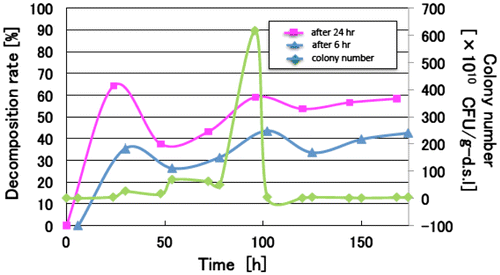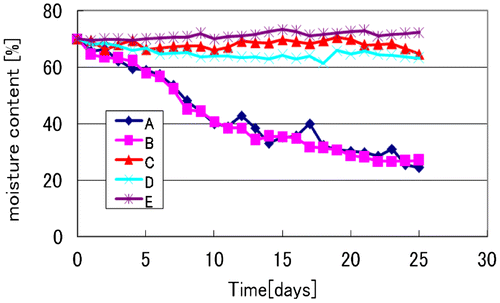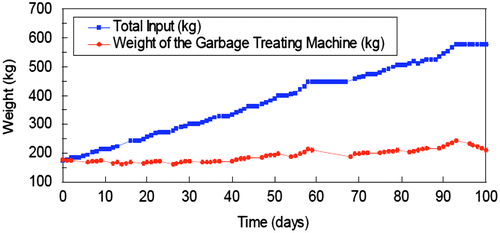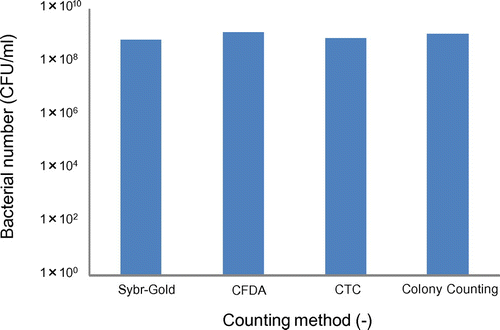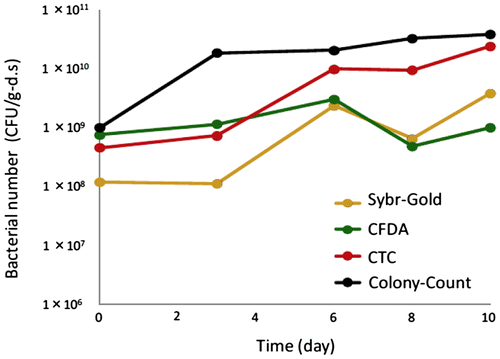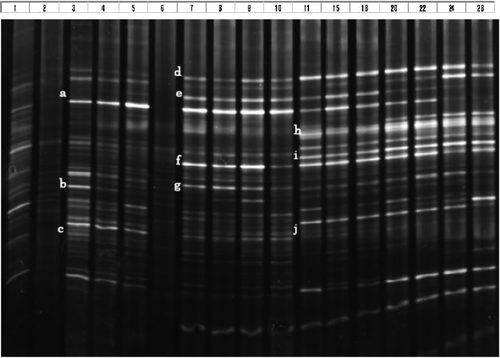Figures & data
Table 1. Conditions of garbage treatment
Figure 2. Time course of decomposition rate of organic matter.
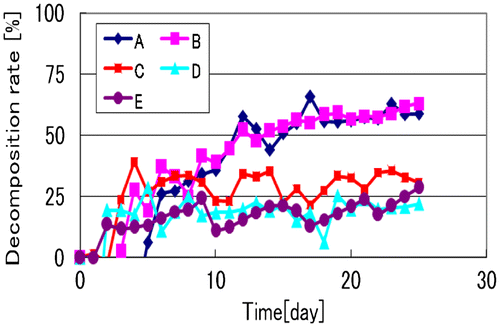
Figure 3. Time course of the weight the virtual reactors with various materials for wall.
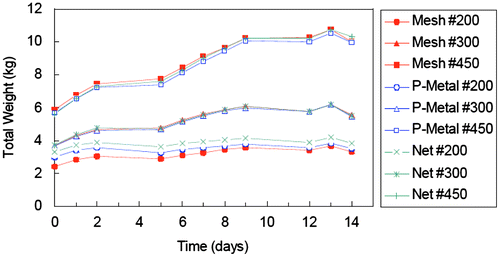
Figure 5. An example of the time course of garbage decomposition rate and the colony number in the static type treating system.
